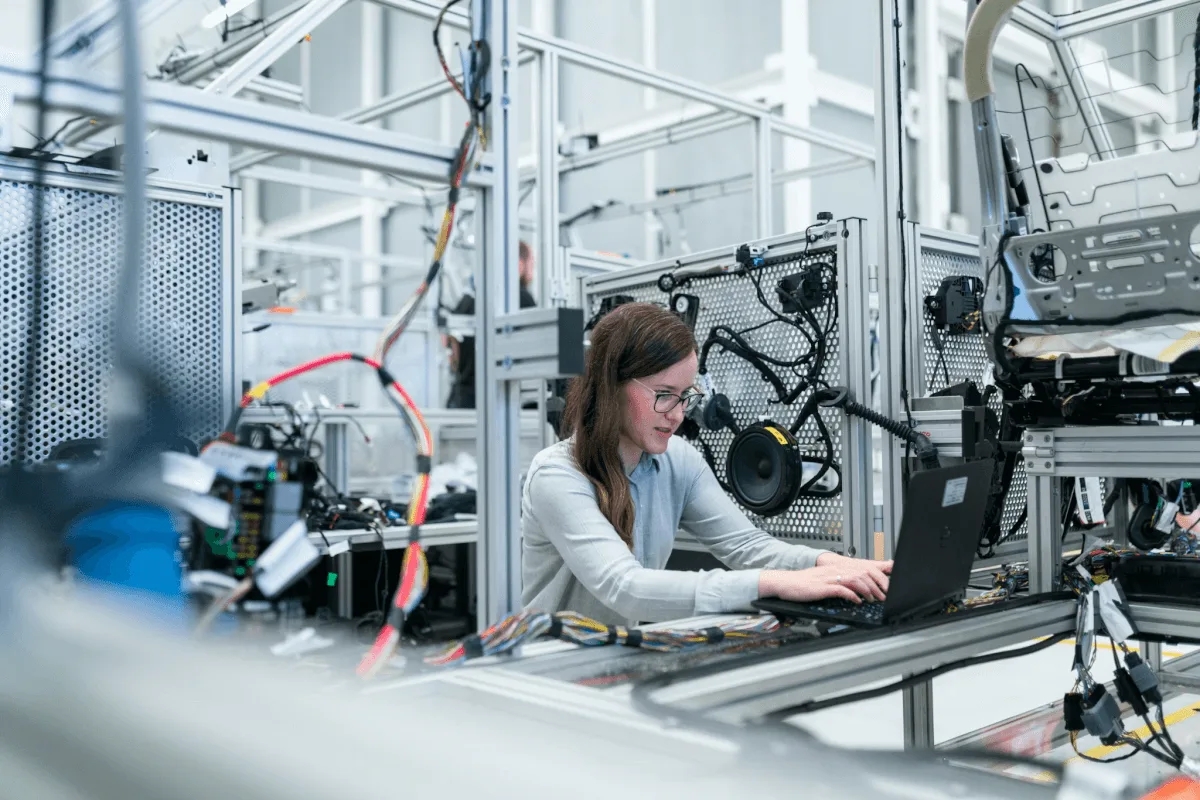The manufacturing industry is always changing, driven forward by technological improvements, which make things more efficient and lead to an environment conducive to innovation. Because of these ongoing changes, projections show that the added value in the manufacturing market will be around $8.6 trillion by the end of 2024.
Lately, there have been considerable changes not just in how products are made but also in the overall environment of this sector. From digital alterations seen in procurement to the growth of robotics, these trends indicate a brand new phase for manufacturing enhancing productivity and durability.

Modern Technology for Procurement
There has been a significant change in the way procurement in manufacturing is managed, mainly because of modern technologies being integrated. The rise of automation has greatly altered how manufacturers select suppliers and manage their procurement tasks.
This shift towards digital tools helps businesses make their operations better, increase cost-effectiveness and improve relationships with suppliers. Moreover, using artificial intelligence lets manufacturers predict what they need for procurement and simplifies the process of ordering. This reduces both time and money spent. Also, automation speeds up operations making it easier to manage complex supply chains while helping to follow international rules and regulations more effectively.
Internet of Things (IoT)
The Internet of Things (IoT) has revolutionized manufacturing by linking devices together and gathering and analyzing data instantly. This connection offers deep operational insights, predicting when maintenance is needed and reducing equipment downtime.
Take, for example, the sensors installed in machines that can spot signs of wear and tear early on, scheduling maintenance only when crucial. This approach not only prolongs machines’ lifespan but also maintains uninterrupted production flow.
Automation and Robotics
The influence of automation and robotics on manufacturing is expanding, reshaping production lines across the globe. Robots have become standard in assembly operations, executing tasks more accurately and swiftly than their human counterparts. The innovation in producing internal units that can carry easy commands back and forth, allowing for efficiency and precision within an automated unit, is also on the rise. Using a Servo-Umrichter within a manufacturing setup isn’t all that uncommon these days.
Integrating autonomous vehicles and drones into manufacturing facilities material handling and inventory control boosts operational effectiveness. This development not only increases production capabilities but also heightens worker safety by assuming hazardous duties and diminishing the likelihood of accidents on the shop floor.
3D Printing Technology
Emerging as a revolutionary force in manufacturing, additive manufacturing, commonly known as 3D printing, is making changes, particularly in product development and customization. This tech enables manufacturers to craft parts that are not only lighter and stronger but also more intricate compared to traditional techniques.
With the power to produce components as needed, 3D printing reduces waste and inventory expenses, marking a significant improvement in sustainable manufacturing. Additionally, it’s paving the way for personalized products and quicker prototyping, ultimately fast-tracking the journey from design to market.
Sustainable Manufacturing Practices
Regulations and the growing customer inclination towards environment-friendly products are making sustainability an important goal in manufacturing. Companies are adopting energy-saving technologies with a focus on reducing their carbon emissions. Manufacturing sites also use renewable energy more frequently, such as solar and wind power for running their activities.
There is a bigger emphasis on recycling and using materials again, which saves resources and lessens harm to the environment. The use of these sustainable methods is not just good for the environment but also has economic benefits for manufacturers as they improve their brand image and help keep more customers.
Advanced Materials
Advancing material science is significantly changing what manufactured products can do. Modern materials like new composites and lighter metals allow for manufacturing parts stronger as well as lighter.
This has a significant influence, especially in fields like aerospace and automotive sectors where both strength and lightness are very important. The increase in bio-based materials is assisting the industry’s move towards sustainability by providing choices that are good for the environment and high-performing at the same time.
Moreover, the development of nanomaterials opens up possibilities for creating incredibly small yet powerful components, revolutionizing various industries from electronics to medicine. As research continues, the potential for materials engineered at the atomic level to transform technology and improve everyday life becomes increasingly apparent.
Final Thoughts
The six trends we covered in this piece only mark the start of a continuous change in manufacturing. As companies adopt these advancements, they’ll be better equipped to meet market demands and stay competitive globally.
The outlook for manufacturing is exciting, blending technology, sustainability, and advanced materials science. This promises enhanced efficiency and growth opportunities. Manufacturers investing in these trends will not only secure their future but also pave the way for a more efficient and sustainable industrial era.



